Showing Spotlights 97 - 104 of 333 in category All (newest first):
 Among 2D materials, graphene is considered as one of the important components in many van der Waals (vdWs) heterostructure assemblies due to its high carrier mobility, good environmental stability, tunable work function, and mature processing technique. Besides the contact between different 2D atomic layers, the passivated, dangling-bond-free surfaces of 2D crystals can bond together with other dimensional materials through vdWs force. Consequently, fabrication of mixed-dimensional vdWs heterostructures could be carried out through hybridizing 2D crystals with 0D dots or particles, 1D nanostructures, or 3D bulk materials.
Among 2D materials, graphene is considered as one of the important components in many van der Waals (vdWs) heterostructure assemblies due to its high carrier mobility, good environmental stability, tunable work function, and mature processing technique. Besides the contact between different 2D atomic layers, the passivated, dangling-bond-free surfaces of 2D crystals can bond together with other dimensional materials through vdWs force. Consequently, fabrication of mixed-dimensional vdWs heterostructures could be carried out through hybridizing 2D crystals with 0D dots or particles, 1D nanostructures, or 3D bulk materials.
Jul 29th, 2019
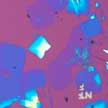 Recently, the investigation of ternary layered compounds with 2D features has emerged. Compared to 2D elements and binary compounds, ternary layered compounds possess more tunability for physical and chemical properties due to more element species. Therefore, exploring the preparation methods and special properties of 2D ternary compounds is of great significance for enriching the 2D material library and expanding the application of 2D materials.
Recently, the investigation of ternary layered compounds with 2D features has emerged. Compared to 2D elements and binary compounds, ternary layered compounds possess more tunability for physical and chemical properties due to more element species. Therefore, exploring the preparation methods and special properties of 2D ternary compounds is of great significance for enriching the 2D material library and expanding the application of 2D materials.
Jul 5th, 2019
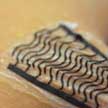 To realize the commercial potential of graphene, for instance for wearable electronics, it is necessary to develop reliable, cost-effective and facile processes for the industry-scale fabrication of graphene-based devices. A novel solution involves the synthesis of high-performance stretchable graphene ink using a facile, scalable, and low-cost laser induction method for the synthesis of the graphene component. This also is the first example of using laser-induced graphene in the form for a powder preparation of graphene-based inks and subsequently for use in screen-printing of stretchable micro-supercapacitors.
To realize the commercial potential of graphene, for instance for wearable electronics, it is necessary to develop reliable, cost-effective and facile processes for the industry-scale fabrication of graphene-based devices. A novel solution involves the synthesis of high-performance stretchable graphene ink using a facile, scalable, and low-cost laser induction method for the synthesis of the graphene component. This also is the first example of using laser-induced graphene in the form for a powder preparation of graphene-based inks and subsequently for use in screen-printing of stretchable micro-supercapacitors.
Jun 14th, 2019
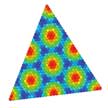 Researchers commonly observe a relative rotation between individual layers of 2D materials. Importantly, these interlayer rotation angles, i.e. at what angle two individual layers are oriented towards each other, influence the electronic properties of the resulting material system. In new work, researchers reveal a general moire-driven mechanism that governs the interlayer rotation. At the core of these findings is the concept of the van der Waals dislocation, a term the team uses to describe the commensurability/incommensurability defect in bilayer crystalline materials.
Researchers commonly observe a relative rotation between individual layers of 2D materials. Importantly, these interlayer rotation angles, i.e. at what angle two individual layers are oriented towards each other, influence the electronic properties of the resulting material system. In new work, researchers reveal a general moire-driven mechanism that governs the interlayer rotation. At the core of these findings is the concept of the van der Waals dislocation, a term the team uses to describe the commensurability/incommensurability defect in bilayer crystalline materials.
May 31st, 2019
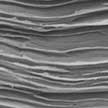 Graphene's outstanding mechanical and electrical properties make it a very attractive material for applications in aerospace and flexible electronics. This, however, requires the assembly of graphene into macroscopic graphene nanocomposites. Researchers report a novel strategy to 'stitch' reduced graphene oxide nanosheets into ultra-strong, super tough, and highly conductive graphene films using only small amounts of cross-linker. Their technique provides substantial improvement in multiple properties including tensile strength, toughness, electrical conductivity, EMI shielding capability, and resistance to mechanical damage.
Graphene's outstanding mechanical and electrical properties make it a very attractive material for applications in aerospace and flexible electronics. This, however, requires the assembly of graphene into macroscopic graphene nanocomposites. Researchers report a novel strategy to 'stitch' reduced graphene oxide nanosheets into ultra-strong, super tough, and highly conductive graphene films using only small amounts of cross-linker. Their technique provides substantial improvement in multiple properties including tensile strength, toughness, electrical conductivity, EMI shielding capability, and resistance to mechanical damage.
May 17th, 2019
 Borophene, the atomically flat form of boron, differs from graphene and other two-dimensional (2D) materials in an important way: It can't be reduced from a larger natural form because bulk boron is not naturally layered. While graphite is composed of stacks of atomically thin sheets that can be peeled off one at a time to make graphene, there is no such analogous process for making 2D boron. Or so researchers had thought. Now, however, researchers have synthesized free-standing borophene for the first time and in a scalable manner.
Borophene, the atomically flat form of boron, differs from graphene and other two-dimensional (2D) materials in an important way: It can't be reduced from a larger natural form because bulk boron is not naturally layered. While graphite is composed of stacks of atomically thin sheets that can be peeled off one at a time to make graphene, there is no such analogous process for making 2D boron. Or so researchers had thought. Now, however, researchers have synthesized free-standing borophene for the first time and in a scalable manner.
May 14th, 2019
 Rare earth metals and alloys that contain them are used in many devices that people use in their everyday lives. Whereas the research on two-dimensional (2D) nanomaterials such as graphene, hexagonal boron nitride, MXenes, transition metal dichalcogenides, or metal-organic frameworks moves full-steam ahead, overview reports on 2D rare earth materials are, well, rare. However, with the electron confinement within mono- or multi-layers, the optical, magnetic, electric, catalytic, and adsorptive properties of ultrathin 2D rare-earth nanomaterials may also vary remarkably from those of the bulk phase, opening up great opportunities for applications in numerous areas.
Rare earth metals and alloys that contain them are used in many devices that people use in their everyday lives. Whereas the research on two-dimensional (2D) nanomaterials such as graphene, hexagonal boron nitride, MXenes, transition metal dichalcogenides, or metal-organic frameworks moves full-steam ahead, overview reports on 2D rare earth materials are, well, rare. However, with the electron confinement within mono- or multi-layers, the optical, magnetic, electric, catalytic, and adsorptive properties of ultrathin 2D rare-earth nanomaterials may also vary remarkably from those of the bulk phase, opening up great opportunities for applications in numerous areas.
May 7th, 2019
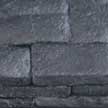 Highly compressible graphene aerogels possess extraordinary properties that exceed the performance of natural materials - superior compressive elasticity; ultrahigh porosity; outstanding tolerance for harsh environment; large specific surface area; high electrical and thermal conductivity. Now, researchers have fabricated graphene aerogel 'bricks' that can be assembled into much larger aerogel structures. These highly oriented and dense microstructures possesses arbitrary macroscale, outstanding compressive strength, superelasticity, and high conductivity.
Highly compressible graphene aerogels possess extraordinary properties that exceed the performance of natural materials - superior compressive elasticity; ultrahigh porosity; outstanding tolerance for harsh environment; large specific surface area; high electrical and thermal conductivity. Now, researchers have fabricated graphene aerogel 'bricks' that can be assembled into much larger aerogel structures. These highly oriented and dense microstructures possesses arbitrary macroscale, outstanding compressive strength, superelasticity, and high conductivity.
May 6th, 2019
 Among 2D materials, graphene is considered as one of the important components in many van der Waals (vdWs) heterostructure assemblies due to its high carrier mobility, good environmental stability, tunable work function, and mature processing technique. Besides the contact between different 2D atomic layers, the passivated, dangling-bond-free surfaces of 2D crystals can bond together with other dimensional materials through vdWs force. Consequently, fabrication of mixed-dimensional vdWs heterostructures could be carried out through hybridizing 2D crystals with 0D dots or particles, 1D nanostructures, or 3D bulk materials.
Among 2D materials, graphene is considered as one of the important components in many van der Waals (vdWs) heterostructure assemblies due to its high carrier mobility, good environmental stability, tunable work function, and mature processing technique. Besides the contact between different 2D atomic layers, the passivated, dangling-bond-free surfaces of 2D crystals can bond together with other dimensional materials through vdWs force. Consequently, fabrication of mixed-dimensional vdWs heterostructures could be carried out through hybridizing 2D crystals with 0D dots or particles, 1D nanostructures, or 3D bulk materials.
 Subscribe to our Nanotechnology Spotlight feed
Subscribe to our Nanotechnology Spotlight feed





